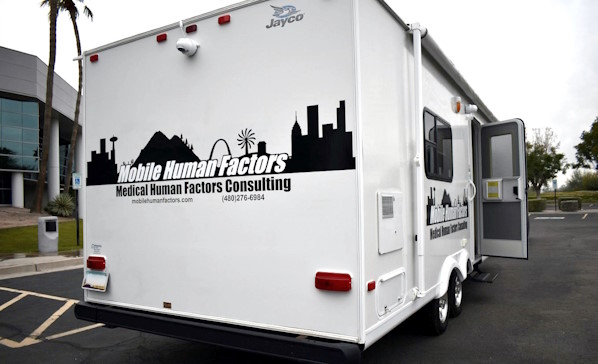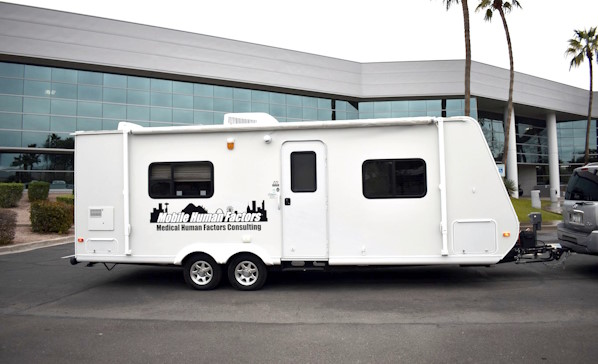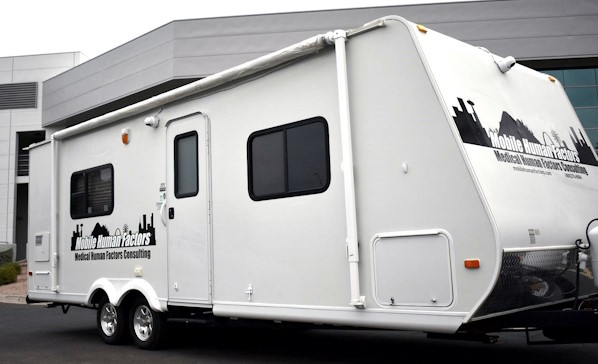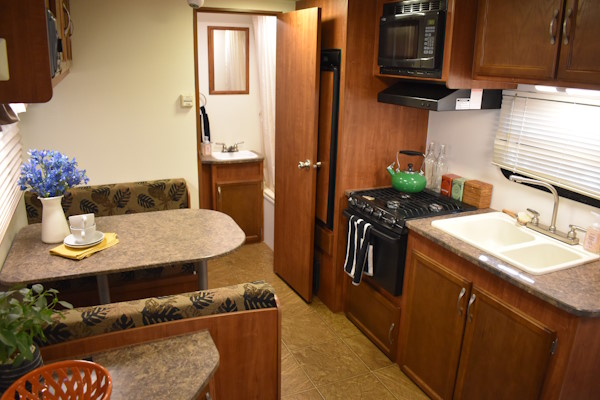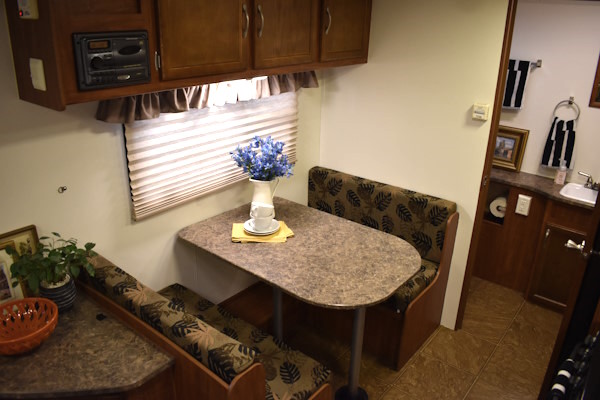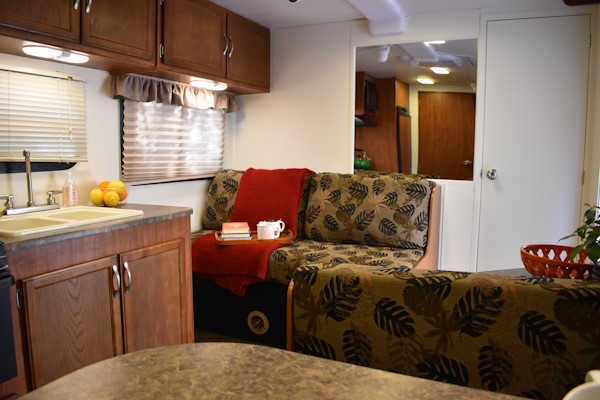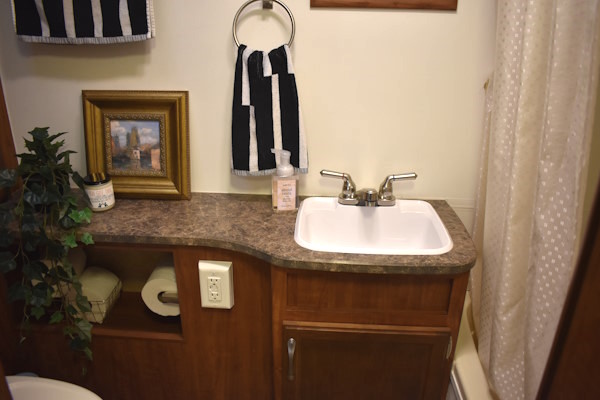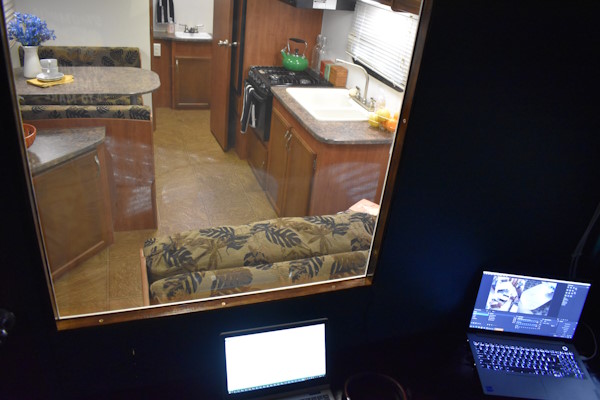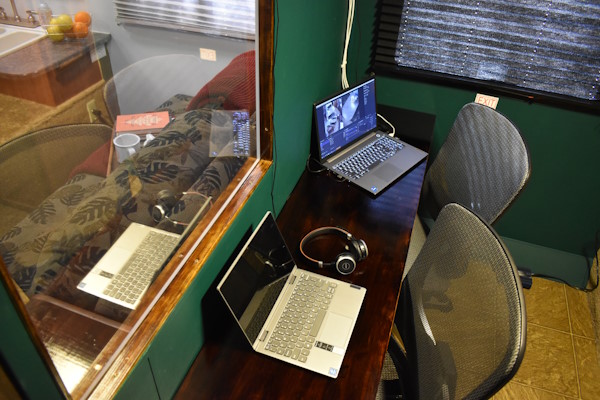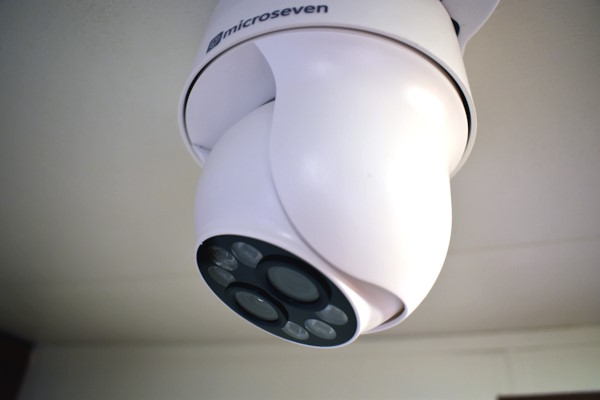Services
Mobile Human Factors strives for flexibility and growth, and is willing to adapt to meet your needs, even if it is unrelated to medical human factors. Here are some of our services.
Mobile Facility: Simulated Home Environment
Why did a participant use the product incorrectly? "Because I am in a lab" is a common answer. Responses like these create costly data noise, while weakening your submission to the FDA. Facilities that are too far from reality can even result in a rejected submission. The mobile facility was developed to generate higher quality data, at a competitive price.
High-fidelity
The mobile facility is equipped to be more like home.
- Kitchen sink for washing
- Bathroom, sink, and tub for washing/emptying/etc.
- Countertops for preparation space
- Kitchen implements (scissors, pens, knives, etc.)
Observation Suite
The mobile facility is fitted with observation equipment.
- Video/audio recording and streaming
- PTZ cameras
- One-way mirror and observation room
- Two-way audio
Mobility
The mobile facility can go where the project requires.
- Move with your population center
- Follow patient hotspots for difficult populations
- Reduce participant dropout by bringing the study to the participant
Consulting-optional
Consulting with Mobile Human Factors may include use of the mobile facility. Alternatively, you may hire just the mobile facility.
| Mobile facility rates (no consulting) | |
| Per study day, includes all fees | $800* |
| Per mile** of travel outside zip code 85224 | $4* |
*pricing is for average conditions, and subject to locational and seasonal differences
**maximum of 500 miles per day, $200 minimum
Empirical Evaluations
Some questions can only be answered by observing the intended user interact with a product in the intended use environment. There are many ways someone may misuse your product, and empirical evaluations can help you focus on the most important ones. Additionally, empirical data provides the strongest argument to the FDA.
Formative Testing
Formative studies may occur at any point in the development process, and are typically used to provide information for designing the device, instructions/labeling, and packaging. Development supported by human factors can cost more time and money up front, but the superior product it creates will likely result in better sales, reduced legal costs, lower risk of rejected submission, and reduced chance of product recalls.
Direction
Early directional studies can tell you how well a concept addresses the needs, wants, and other circumstances of the intended users.
Down-selection
It can be hard to pick one design, and putting early product concepts in front of users can tell you which one best meets the user's needs.
Uncover Issues
It is much easier, cheaper, more effective, and less stressful to find and address design flaws earlier in development.
Incremental Validation
Testing throughout development can confirm whether modifications address the issues you want to fix, or reveal if they cause new issues.
Protocol Development
Testing helps develop tasks and questions for the validation study. Untested tasks and questions are prone to study artifacts, which can lead to a rejected submission.
Validation/Summative Testing
At this point the product is complete and ready for market, and the validation study (also known as summative study) provides the evidence it is ready. Often, much of the HFE report going to the FDA as part of your submission will depend on the report from your final validation study.
What is tested?
Validation testing is conducted with product, packaging, and instructions/labeling as it would be on the shelf in the store.
What if we see errors?
For any residual risks identified in the study you have an opportunity in the report to say why that residual risk is acceptable.
Did it pass?
This is up to you. If any residual risks are unacceptable to you, then the product requires redesign before submission.
We made some changes...
Changes to the product after validation may require a supplemental study to evaluate the aspects affected by the redesign.
Many manufacturers try to complete all product development without any human factors work prior to the validation study. While Mobile Human Factors will try to help you at any part of the development cycle, success is most likely with early human factors involvement.
Comparative Testing
Comparative testing is performed when a non-minor difference was identified between the proposed generic product and the reference product in a threshold analysis. It can be very difficult to know whether a non-minor difference found on paper is of concern in the real world, so comparative testing can be used as evidence to the FDA.

Current users of the reference product are brought in to use both the reference product and the proposed generic product, which provides hard side-by-side performance data.
Analytical Evaluations
Mobile Human Factors can evaluate a product or concept without the time and cost of putting it in front of participants. Analytical evaluation is not a replacement for empirical testing, but it can provide focus and direction to make empirical studies and designing efforts more effective. Analytical evaluation is most effective early in a product’s development, but it can yield valuable information even if conducted later.
Cognitive Task Analysis (CTA)
A good place to start, and often used as a precursor to the URRA, the CTA helps reveal potential areas of concern in the individual steps of using a product, while also helping to identify where the root of a problem lies.

This helps inform design decisions, so you are mitigating issues at the root and not the leaves.
Use Related Risk Analysis (URRA)
Essential for any human factors submission to the FDA, the URRA is your compass for all human factors activities.

While it is the manufacturer’s responsibility to complete the URRA (particularly the potential harms of various errors, and their respective severities), Mobile Human Factors can help you get started by creating a framework of potential use errors and their potential causes. The URRA is intended to be a living document that tracks all residual risk throughout the product’s lifecycle, and used correctly will help identify issues and inform development.
Threshold Analysis
Proposed generic medical devices through the ANDA pathway may meet human factors requirements through a threshold analysis instead of a validation study or comparative study. In a Threshold Analysis Mobile Human Factors compares every aspect of the generic product to the reference product looking for any potentially non-minor differences.
What does that include?
Anything could impact use, including instructions and packaging. The target population may have special considerations such as dexterity issues that would require easy-open packaging, or vision issues that require large font.
How similar should it be?
The FDA wants proposed generics to be as close to the reference product as possible, such that a current user could use the generic without any new learning or instruction, relying on their familiarity with the reference product.
Can I make it better?
Even improvements over the reference product could create undesirable outcomes, such as incompatability with the routine of a current user.
Comparative Task Analysis
Sometimes it is hard to choose between two (or more) design concepts, even after putting them in front of users. The comparative task analysis can help you see the forest through the trees.

A side-by-side comparison of each concept’s task analysis can reveal that seemingly insignificant differences can lead to more complex interactions, with more opportunity for errors. Alternatively, it could reveal that one design reduces use steps by creating one high-severity potential use error.
